7 June, 2000
Up from the Deep
June 7, Wednesday
The winch hoisted the rosette up over the railing and out over the water.
For a moment the rosette was still, suspended in the air. Then, ever so
slowly, the winch lowered it down into the icy water. Susan and I watched as
it rippled in the water, sinking deeper and deeper until it disappeared from
view.
The rosette is a metal frame with scientific instruments attached to it. The
most prominent were the Niskin bottles, used for collecting water at
different depths. Scientists then test the water for oxygen, nutrients,
salt, and other things. They can even find out where pollution is coming
from by sampling water from different places.
The design for Niskin bottles came from the Norwegian explorer Fridtjof
Nansen. Nansen sailed his ship, the Fram, into the Arctic Ocean in 1893
where it remained stuck in the ice for three years. During that time, Nansen
and his crew used the special bottles to collect water samples every two
hours. Can you imagine doing that for three years! They collected a lot of
data that way, but it was very hard work. Today scientists can program a
special computer to close each bottle at the depth they choose.
Another important instrument on the rosette is the CTD sensor. CTD stands
for Conductivity, Temperature, and Depth. This instrument gives scientists
important information about the salinity and temperature of the water at
different depths. There is also a fluorometer that measures how much
chlorophyll is in the water. Chlorophyll, the substance that makes plants
green, looks fluorescent when a special light is shined on it. Scientists
measure fluorescence to find out how much phytoplankton (microscopic plants)
is in the water.
The thing Susan and I were most interested in, though, were the mesh bags
tied to the bottom of the rosette. Inside those bags were hundreds of
styrofoam cups decorated by our students, the scientists, and the Healy
crew. We were doing an experiment to see what would happen to the cups when
they were lowered 1,900 meters down to the bottom of the Arctic Ocean.
That's more than a mile down!
What do YOU think happened to the cups? I'm not going to tell you! To find
out, you'll have to click on Susan's page:
Susan's Entry
Today.
DAILY DATA LOG (6/07/00)
Air Temperature: 0 degrees C / 31 degrees F
SNOWING!!!
Latitude 60N
Longitude 56W
Sunrise 4:44 a.m.
Sunset 11:06 p.m.

Janice helps Bill Martin to collect water samples for testing.
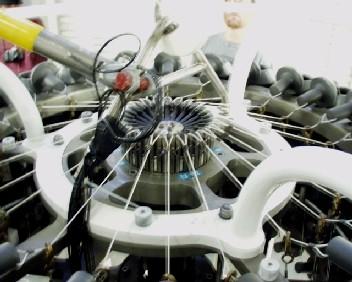
Mechanism for closing Niskin bottles on the rosette. A computer tells each bottle when to close.
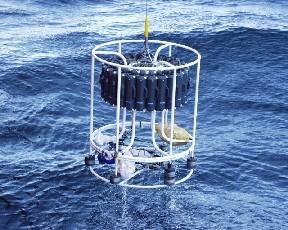
The rosette is lowered over the side into the icy water.

Bill Martin takes water samples from the Niskin bottles.
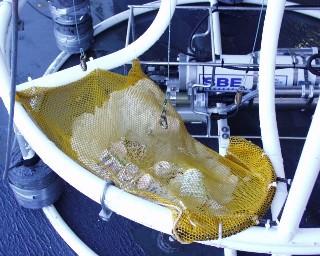
We put the styrofoam cups in mesh bags and tied them to the bottom of the rosette frame.
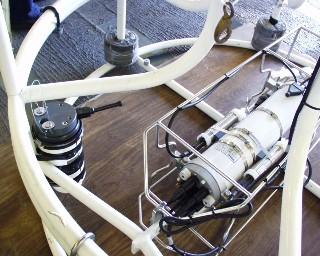
The CTD is attached to the bottom of the rosette frame. It measures the salinity and temperature of water at different depths.
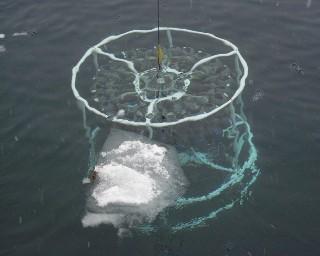
Going down into the icy water.
Contact the TEA in the field at
.
If you cannot connect through your browser, copy the
TEA's e-mail address in the "To:" line of
your favorite e-mail package.
|
